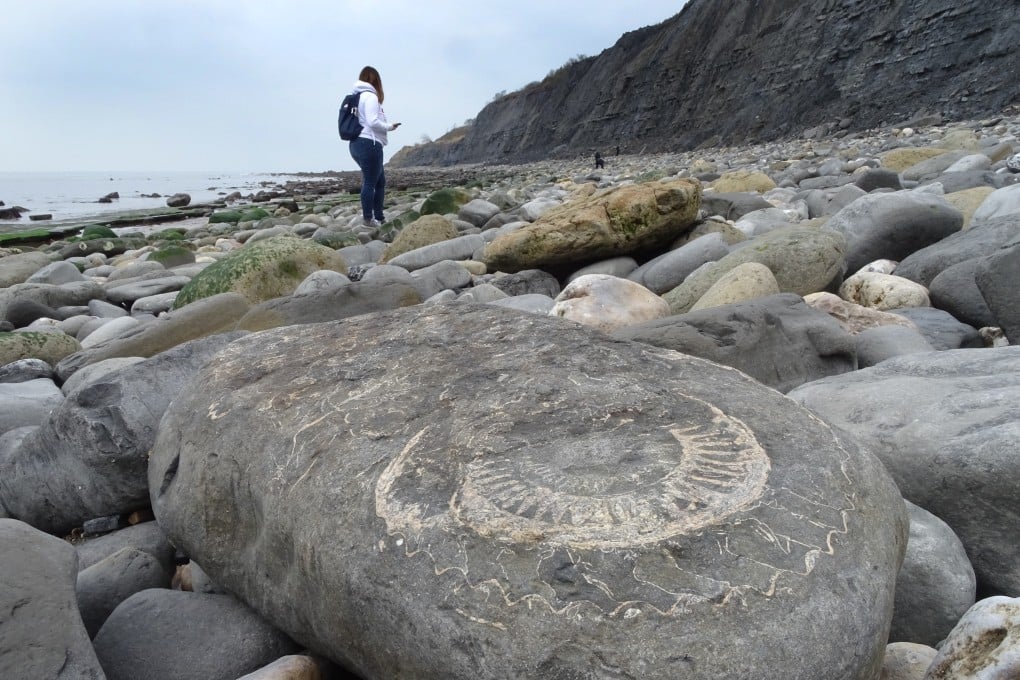England’s Jurassic Coast – journey through time from when dinosaurs roamed to Regency resorts
- The coastlines of East Devon and Dorset have witnessed some 185 million years of history
- The area remains fossil-filled, but is more than just a palaeontological playground

Here be not dragons, but plesiosaurs, belemnites, ammonites and other species of fish, insects, trees, ferns and grasses that have long since gone extinct.
Stretching a little over 150km along the coastlines of East Devon and Dorset, in southwest England, the Jurassic Coast was added to the list of Unesco World Heritage sites in 2001, thanks to its unique geological make-up. Some 185 million years of history are visible in the steep cliffs that plunge from headlands to the English Channel, with rock formations dating from the Triassic, Jurassic and Cretaceous periods sandwiched atop one another.
It was here that the first identified remains of a dinosaur were discovered – although when 12-year-old Mary Anning unearthed the skeleton of an ichthyosaur in 1811, no one quite knew what she had found. Further excavations have revealed the skeletons of more of these powerful marine reptiles (Mary’s discovery was described as a “crocodile in a fossil state” at a 1819 auction), along with what is left of members of a great many other species. Even today, there are plenty still waiting to be unearthed.
Lyme Regis – with fossil-filled cliffs at either end of the town – is ground zero for palaeontologists, and is likely to become a more widely popular destination after the release next year of the BBC Films period piece Ammonite– the title a reference to the fossils of marine molluscs, which were known as snake stones in late-18th-century terminology. Filming began in the town in March, with Kate Winslet and Saoirse Ronan heading the cast in a story that revolves around Anning’s many discoveries, which would contribute to changes in scientific thinking about prehistoric life and the history of Earth.

Fresh from having done a little fun but largely fruitless digging of our own, my dinosaur nut of a five-year-old son, Harry, and I visit Lyme Regis Museum. Built on the site of Anning’s former home, the small but remarkably informative museum has some impressive full dinosaur skeletons, which were found nearby, and tells the town’s more modern history – ranging from the exploits of 18th-century “wreckers” who lured unsuspecting ships onto rocks in order to claim their cargoes to the men of the Home Guard who patrolled these beaches when an invasion by Nazi Germany seemed imminent.